
Foxtel’s Hubbl Set Top Box shows promise, but it’s best suited for those who split their viewing time evenly between streaming and free-to-air watching.
| Pros | Cons |
|---|---|
| Inexpensive | Intermittent slowdown |
| Good remote | Baffling that remote lacks EPG button |
| Stacked subscriptions could be a real money saver | Controlled apps means less scope for smaller streaming players |
Score: 3/5
Over the years, a lot of Australians have had a Foxtel box of some sort underneath their TV, whether it’s been an IQ box of some sort, or the ill-fated Foxtel Now box.
Technically, I could count some of Telstra’s TV boxes in that number as well given the complex ownership of Foxtel and Telstra’s tie-ins there, but curiously, while Telstra’s owned Fetch TV for some time now, Foxtel’s streaming apps such as Binge and Kayo Sports have been notably absent there.
The Hubbl Set Top Box (and Hubbl Glass TV) are probably why.
They’re the Foxtel Group’s play for streaming-hungry audiences that still want at least a taste of free-to-air broadcast TV as well, built on the promise of truly integrated search for any programs that you want to watch, with the added hook of discounts on streaming subscriptions if you bundle them through Hubbl.
A quick note here that Hubbl is the name of the set top box, the suffix of the TV (Hubbl Glass) but also the software platform as well that you subscribe to. It’s rather confusing, frankly, but I’ll do my best to make it as clear as possible while writing about it. This would be much simpler if the Hubbl Box was called the Hubbl Box… you know what, while the Foxtel Group doesn’t call it that, I’m going to, just to make it simpler.
Anyway, the Hubbl Box (see, it’s working already!) is a genuinely interesting device, but sadly it’s one that doesn’t quite live up to its promises at launch.
There’s maybe scope for some of it to improve over time, but right now it’s best suited to that precise audience that can’t quite cut the antenna cable out of their lives.
If you live in a purely streaming world, it’s hard not to argue in favour of other solutions.
Design
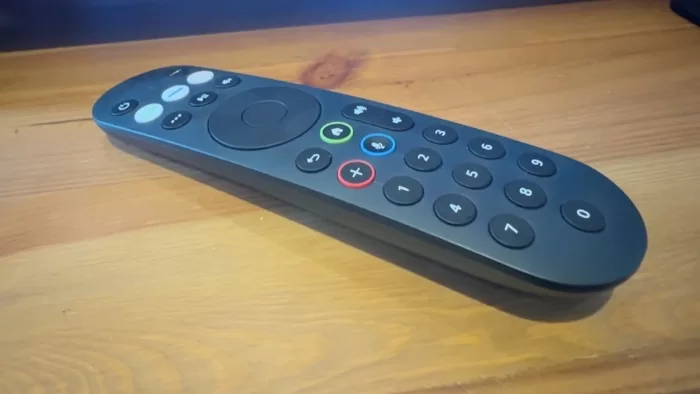
The actual Hubbl box itself has a quite plain design, somewhat reminiscent of the older Telstra TV device. Where Hubbl Glass comes in different frame colours, you can only get the Hubbl box in black. That’s fine, given that black basically blends in with just about any décor you’d care to name.
At the rear, you’ll find a standard antenna input, ethernet input, HDMI and power. That’s all fine, and easy enough to install at a physical hardware level.
What I do like – mostly – is the Hubbl box remote control. Bearing in mind that this is a $99 device, it’s competing pricewise more with the higher-end Fire TV sticks and Google Chromecast with Google TV than anything else. Those devices have tiny, slightly awkward remote controls that practically will themselves to be lost in the sofa.
The Hubbl Box has a full-sized remote control, making it much easier to handle and considerably harder to misplace.
Like so many other streaming box remotes there are dedicated app launching buttons at the top of the remote. To the surprise of nobody, two of them are earmarked for Binge and Kayo Sports, while the third goes to Netflix.
I’d love just one streaming box supplier to make those kinds of buttons programmable – I’m not really going to use the Kayo Sports button much ever, for example – but this is the way that industry goes.
Setup
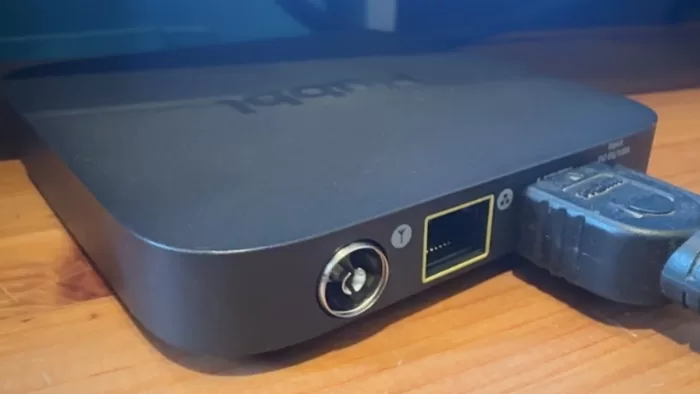
Setting up the Hubbl Box is relatively straightforward, with your usual run of connecting to the Internet, downloading any needed updates and signing into a Hubbl account, which is required.
There’s an important distinction here, because while Hubbl is the new company name for Streamotion, the division of Foxtel that runs Binge, Kayo Sports and the new Lifestyle service, you’re not specifically required to subscribe to any of them.
You need an account, but that’s all. In theory, you could use the Hubbl box sans any Foxtel apps at all, though you’d certainly be reminded of them a whole lot.
There are some quirks to the setup process to bear in mind. I first connected via Ethernet, which sped up connectivity, but later switched to a Wi-Fi connection, at which point the Hubbl app wanted me to input the Wi-Fi password via a scrolling letter chooser. All very old-school arcade game style, but also SLOW AS HELL.
It’s terrible UI design for Wi-Fi passwords where you’re going to have to scroll through lower and upper case alphabets and numbers and characters a lot just to get online. It’s also weird, because I’ve not seen that part of the UI in any other direct Hubbl interface again.
Hubbl also lets you sign into the free to air streaming services, and here it’s a mixed bag of direct on-TV codes that you can authorise through a browser and some sign-in efforts, though none quite as painful as the Wi-Fi input menu. I can’t entirely blame Hubbl for this, because the authorisation of those apps is down to the ABC, SBS, 9, 7 and 10, but it is still notable that there’s friction here.
Performance
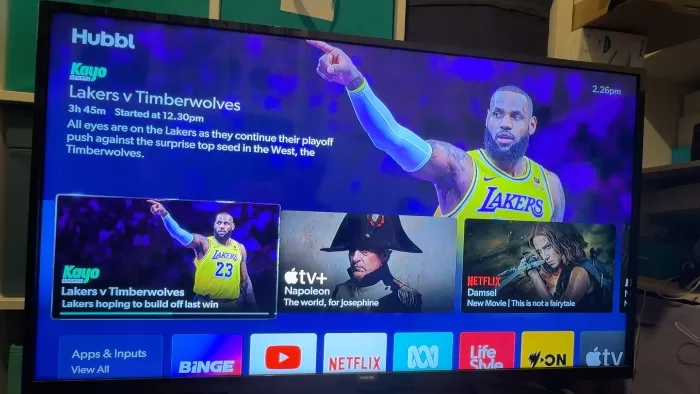
The primary Hubbl UI doesn’t entirely reinvent the game when it comes to streaming box interfaces. It’s a carousel with big flashy pictures, just about the same as everyone else. That’s fine, because it’s a model that most people are really familiar with.
Hubbl is a late entrant to the streaming box category, so it needs a point of differentiation.
Hubbl’s particular claim to fame (as per Hubbl) is that it’s going to do integrated search via text or voice better than anyone else. Here, my own experiences have been mixed at best. I’ll give it points for good voice pickup, understanding me a little better than a Fire TV stick or Google Chromecast does.
However, I’ve got to take those points away because Hubbl’s search is damned inconsistent, even for obvious searches. In one instance, my better half searching for The Great British Bake-Off was told that it couldn’t find a program of that name.
It’s on Binge, and you’d think if there was one service that the Hubbl Box could search accurately, it’d be Binge!
Hubbl is also meant to surface interesting content, and I guess I shouldn’t be shocked that at first it’s mostly shifting Hubbl-owned properties at me. What’s slightly annoying here is that there’s no way for you to tell the Hubbl box not to show content from specific apps or platforms.
I’m not a big sports watcher at all, so telling me that the Cricket is on via Kayo Sports isn’t useful to me at all.
Your own tastes and desires may vary, and maybe over time Hubbl will get smart enough to realise this. At the moment, though, it mostly just feels like a big advert for sports I’ll never watch or shows like Married At First Sight that you couldn’t get me to watch at gunpoint. As always, your personal TV tastes may vary.
Where the Hubbl Box has an edge over its Google and Amazon rivals in this space is the inclusion of a TV antenna socket. That puts it more in the sights of the Fetch Mini, a more expensive box that works within the Fetch ecosystem.
Just on price alone, the Hubbl Box is a solid competitor here, especially as its suite of supported apps is considerably wider than that of the Fetch Mini.
However, again here there are catches. You’d think that a box that mixes up broadcast and streaming TV might make it easy to get to the EPG via a button on the remote control. You would be wrong, because there is no such button.
Getting to the channels interface is a tad convoluted, making it less appealing to the very crowd that might like such a feature.
On the app front, the Hubbl Box is a 100% controlled experience. So while there’s an App list, you never have to “install” apps.
Every app it supports is present and pre-loaded for you, with the promise that future included applications will be installed overnight for most users (unless you’re a night owl and you use your Hubbl Box a lot in the wee hours), appearing without intervention.
Again, I can see the appeal here, because there’s plenty of folks who don’t have the desire to muck around with app stores and the like. However, that does limit you purely to the apps that Hubbl wants you to have on the Hubbl Box, and it will always be that way.
At launch, it supports 7plus, 9Now, 10 Play, ABC iView, ABC Kids, Apple TV+, BINGE, Disney+, Flash, Kayo Sports, LifeStyle, Netflix, Prime Video, SBS On Demand and YouTube. It’s promised that Optus Sport, Paramount+ and Stan will come to the Hubbl Box “at a later date”, but it’s not clear at all when this might be.
That’s a nicely comprehensive list of the major players in the local market that could suit a lot of tastes. At the same time, I can’t help but notice the apps on competing platforms that aren’t there.
Where’s the likes of Crunchyroll, Triller TV, Britbox, Shudder, to name but a few? There’s no capacity for home network server streaming either, though that does feel like it’s maybe a touch outside the Hubbl target market.
The other issue here is that the app experience is (at launch) a little inconsistent, even across some of Hubbl’s own apps.
Comparing Binge on the Hubbl Box to Binge on the Chromecast with Google TV, I was more quickly able to find apps or see shows I was already watching on the Chromecast than I was on the Hubbl Box.
Hubbl’s retort there might be that the integrated search moves somewhat beyond the need for app-led usage, and maybe that will be true for some, but there are times when I just want to browse or search through a given platform’s offerings precisely because I don’t always know what’s there.
I’m also told (by fellow Australian tech journalist and sports tragic Chris Stead) that Kayo Sports on the Hubbl Box is also plagued with unskippable ads in sports replays; if you’re using Kayo Sports on other devices for already-played matches you can apparently fast forward through the ads that were there. If you’re using the Hubbl Box, you can’t actually do that, or use the four-in-one view for selected sports as you can on other devices.
That’s just weird, Hubbl, because it makes other devices look better than yours for content you actually control.
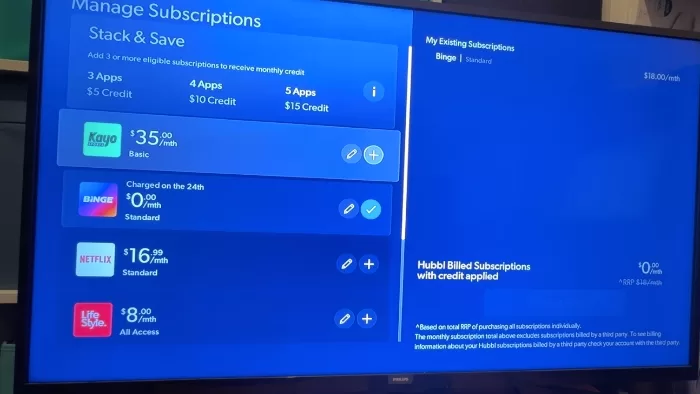
The Hubbl Box’s other party trick is subscription stacking, giving you a discount on services if you transfer your billing purely through Hubbl for those apps.
With 3 apps bundled you get a $5/month credit, for 4 apps it’s $10 and for 5 apps it’s $15. In these financially constrained times, that feels like it should be a real winner.
It might be, though at launch the apps that actually support it are kind of limited. Binge, Kayo Sports, Flash and Lifestyle are there, and that’s no surprise at all, but the only other options are Netflix and Disney+. Basically, unless you’re subscribing to most of Hubbl’s inhouse apps, the benefits here are likely to be slim.
That discount also really relies on you staying subscribed to all of those services through Hubbl, which might not lead to real savings at all.
My standard advice here is to jump subscription streaming services on a monthly basis; watch all you want on Netflix for a month, then bounce to Disney+, then to Stan, maybe elsewhere, rinse, repeat.
Classically there’s no penalty for doing that, and you don’t end up paying for services you’re not really watching, but subscription stacking won’t as easily let you do that while keeping any real level of discount in play.
Hubbl Box: Alex’s Verdict

Having more competitors in the streaming box space is no bad matter, and it’s laudable that Foxtel has resisted the temptation to make some level of Binge/Kayo Sports/Flash/Lifestyle subscription mandatory.
The way that it integrates search (in theory) across both free to air and streaming platforms could be a real boon for some TV addicts, too.
However, the implementation at launch just isn’t quite there yet. Response compared to the cheaper Google and Amazon devices is markedly slower, and if you’re only interested in the streaming side of life, they’re more open and flexible platforms with much wider app support.
They don’t have antenna support, however, and here the Hubbl does have an edge over the Fetch Mini… but again it really could have done with an easier fast way to access the EPG, ideally from the remote control.
Integrated search is good, and the voice control functionality responds well… but this somewhat falls over if the search results aren’t what they need to be.
Hubbl Box: Pricing and availability
The Hubbl Box is available to buy in Australia for $99 outright.
Was this review useful to you? Support independent media by dropping a dollar or two in the tip jar below!
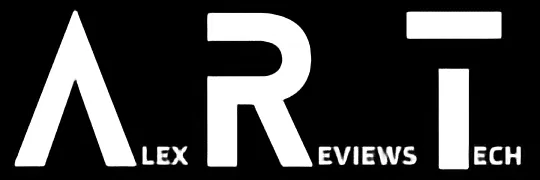





Nice review,appreciate the comparison of say Binge App performance/searches on Hubbl Puck/Box vs say Chromecast or Firestick too.
With recent Foxtel package changes,been discussing possible alternatives with older parent i care for & finding less to watch on Foxtel with content reverting back to other services (eg: Nat Geo to Disney+,I think?).
Combos like Binge having channels she’d like with alternates like Britbox & then either Netflix/Disney/Amazon Prime or similar for say some movies old or new & pay less than Foxtel Plus seems ideal as much as its a shame losing the ability to record shows,but guess maybe can look out for a Fetch Mighty or those combo PVR players later for that.
I’m curious if the Hubbl account will eventually replace having separate Binge,Lifestyle (when it launches),Kayo or similar accounts? And like you point out,the lure of the discount offer is weakened by the lack of 3rd party Apps.
Even IF a service allowed bought content as has been demonstrated on other services like Crumchyroll & Funimation being rolled into one that digital ownership can take taketh as easily as it offers it in the first place & servers shut down!
Thanks for the feedback!
Not too many PVRs available locally outside the Fetch Mighty these days — the prevalence of FTA catch up services have made them less compelling to many consumers, I guess.
The Hubbl account is already there in terms of replacing Binge/Kayo etc accounts — if you’re already a subscriber to what were Streammotion accounts, that’s now a Hubbl account (so when setting the Hubbl Set Top Box if you’ve already subscribed, you don’t need to create a new account to do that.)
The Hubbl advertising says free-to-air channels are available without a tv antenna so what is the aerial connection on the Hubble box for?
The FTA channels can be accessed by their individual apps — they all pretty much provide a “live stream” version of their broadcast channels. However, there’s still some content (mostly sports, I think — sports is not my speciality) where the channels don’t have Internet broadcast rights, so they get blacked out on the app version of the channel. Also I guess on a minor note, using the aerial connector doesn’t involve using any of your broadband data or capacity.
I’ve found my new Hubbl to be quick and decent quality, a solid little box.
It has a very basic set of apps, as noted in the review above. Pretty much an update for Foxtel boxes, AppleTV or Fetch boxes. Set-up was a piece of cake, but the settings menu is hard to find and the options are too limited and a bit of a mess.
What it really lacks is connectivity – if you have bluetooth speakers it won’t work with them, as we found, if you have a Chromecast it falls short of replacement because you can’t add your own apps (no app store, no sideloaded APKs) and no device mirror function so you can’t share what’s playing on your phone with your Hubbl device.
It could have been an amazing box, but falls badly short due to a couple of simple but essential features.
How do I do headphones? Hubbl on the big screen early in the morning with headphones to keep the rest of the tribe safely in duvet world sounds great … but I cannot find out how it can be done. Why would you castrate bluetooth to being just for the remote?
It’s a good question… to which sadly I don’t have an answer you’re going to like!
Hubby’s own support pages (specifically this one: https://help.hubbl.com.au/s/article/Issues-connecting-a-bluetooth-device-to-Hubbl-Glass) note that while headphones to Hubbl Glass (the Hubbl TV) is supported, “Connecting a Bluetooth device to a Hubbl (small device) is not supported.”
For what it’s worth, this is very much something you can do with other streaming set top boxes — I’ve done so myself with the Google Chromecast with Google TV, for example.
I have hubbl and am closing my foxtel account. I have an old iq3 box which Foxtel may not want returned. Can I then link my hubbl to the iq3 and record programs?
While I have not tested that, I’m going to say almost certainly not (or not without a certain amount of hacking and effort). The HDMI signal that comes out of the Hubbl set top box is heavily HDCP encrypted (it was a pain trying to get footage for my video review for this exact reason) and as such, you’d almost certainly find that the IQ3 only recieved a garbage signal, if anything at all. Not sure what Foxtel does in terms of IQ3 boxes working post-contract either.